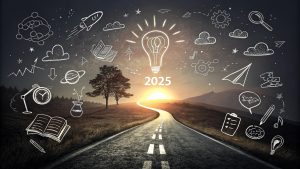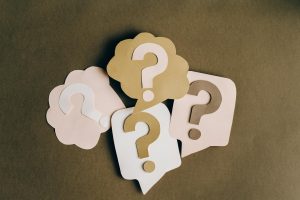Reading skill is absolutely important in the information age. These days we need to be able to absorb new information as fast and as efficient as possible. Since most of the information is presented in the form of text, reading skill is a must. It is a substantial part of what I believe is the most important skill: the ability to choose what to learn and to learn them quickly.
With all the readings in front of you, how do you get the most out of them? How do you master your readings? Here are top 48 hacks you can use:
General preparation
- Enrich your environment
Your environment is essential for effective reading.
From the book Mastering the Information Age:
The environment in which you work or study is a critical part of being a Master (of information age).
You can easily enrich your environment to facilitate learning, creative thinking, and optimum performance.
Enrich your environment to make it ideal for reading.
Resource(s):
10 Ways to Relaxify Your Workspace - Have a good light source
Needless to say, good light source helps you read your readings easily and conveniently. It is also important for the health of your vision. - Get the best chair
Good chair is especially important for long reading sessions. It helps you focus longer on your reading by minimizing physical fatigue.
Resource(s):
What’s the best chair for reading? - Schedule your reading time
Schedule a time which allows you to read without interruption. Ideally, you should provide enough time to get into the flow. Scheduling will also help you develop the habit of reading. - Build your vocabulary
You’d be able to comprehend your reading faster if you already know the vocabulary. Invest time to build your vocabulary and you will tackle broader types of readings faster.
Health
- Have proper diet and exercise
Good physical condition gives you the required energy level for effective reading.
From the book Mastering the Information Age:
Your physical condition is vital to peak mental performance and optimum functioning of your brain. Having a high-level of energy helps you concentrate and get the most of your readings.
To get good physical condition, you should have proper diet and exercise.
Resource(s):
Nutrition Data
8 tips for eating well
Top 42 Exercise Hacks - Get plenty of vitamin A
Vitamin A is important for visual process. It improves your vision especially in dim light. You can get vitamin A from carrot, sweet potatoes, dairy products, and eggs, among others. Get plenty of it, but be careful not to get too much.
Resource(s):
Vitamin A
Vitamin A – Medical Encyclopedia
Vitamin A – Food Standards Agency
Before you read
- Know what the main goal of reading is
In my opinion, the main goal of reading non-fiction is to get actionable ideas. Knowing this goal helps you recognize the gems from the rest. - Be sure that what you read is worth your time
Your time is precious, so eliminate unnecessary readings as much as possible. Before investing more time to read something, survey the reading to make sure that it is really worth your time. - Motivate yourself
What’s in the reading for you? How can the reading impact and change your life? Being aware of how useful a reading is will make you motivated to get the most out of it. This in turn will improve your comprehension. - Eliminate distraction
Eliminating distraction is a condition to get into flow. If you are reading offline materials, turn off the computer or blank the screen. If you are reading online materials, tools like Dropcloth, Clutter Cloak, or Backdrop can help you eliminate distraction by darken the unnecessary parts of the screen. - Prevent interruption
Preventing interruption is also a condition to get into flow. Turn off your cell phone, turn off automatic email notification, and anything else that may interrupt you. If possible, also tell the people around you not to interrupt you. - Listen to music
Music could reduce stress and therefore increase concentration and help you get into the flow state. It also helps you block out outside noise. Instrumental music might be more appropriate since you won’t be distracted by the lyric.
Be careful, though: this is not everyone. Some people can concentrate better in silence. So do it only if it helps you. - Make positive affirmation
Limiting belief is one of the greatest obstacle in becoming an effective reader. You should be confident in your ability to read fast with high level of comprehension. Affirm it to yourself over and over again. - Have specific purpose
Having a clear purpose helps you differentiate which parts of the readings are important and which are not. How can you know what are important if you don’t even know what you want? - Write your purpose
If you think it helps you, write down the purpose. It helps you internalize it. Writing the purpose may especially be useful for readings with longer time commitment like books. - Preview your reading
It is essential to always preview your readings before you read in more detail. Read the table of contents, introduction, chapter titles, subtitles, pictures, and texts which stand-out visually. Previewing your reading makes you familiar with it. It helps you put the ideas you get into the appropriate contexts. - Find the key chapters
Previewing a book helps you identify the key chapters of the book. These are the chapters that could help you achieve your purpose faster. - Set a time limit
How much time are you going to allocate to finish your readings? Setting a time limit helps you concentrate and be ruthless with the unimportant parts of the reading; you will focus more on the important parts. This is actually Parkinson’s law at work.
As you read
- Use the Pareto principle
The Pareto principle says that 80% of the consequences stem from 20% of the causes. Applied to reading, the Pareto principle says that 80% of the value you get comes from 20% of the content. The challenge then is identifying that 20% part. Finding key chapters (hack #18) is one application of this principle, but you can apply this principle further to identify key sections and paragraphs.
That’s why having a purpose in reading is very important. Your purpose helps you find that essential 20% part.
Resource(s):
A Quick and Dirty Reading Strategy When Time is Short - Go through the reading several times
Going through your reading several times makes you more familiar with the reading. It’s like building a skeleton of the reading and adding more and more to it as you go through each pass. The great thing is, since you already have the skeleton, you will always understand the context of your reading. - Question as you read
Questions direct your mind to actively find the answers. By reading actively you will comprehend more. Besides, it helps you get exactly what you need. - Visualize what you read
Visualization activates your right brain. Many writers begin their writing by having a mental image of what they are going to write. They then use the words in the text to transfer the mental image to you, the reader. Your job then is to recreate the mental image. Visualization is a good way to develop such mental image. When you get the mental image, you already capture the essence of the reading. - Adjust your reading speed accordingly
While reading, you should differentiate between the important and not important parts (see hack #20). Your reading speed should then be flexible according to the importance of each part. You should read faster through the unimportant parts and slower through the important parts. - Recognize and read the key words
Key words are the important words that have the highest chance of taking you to the answers you need. Questions help you recognize what the key words are. You can then read the parts of the text which contain those key words more carefully. Chance is, the answers you are looking for are there. - Use your finger as pointer
Your eye movement is vital to your reading speed. If you want to increase your reading speed, you should decrease the readjustment time needed by your eyes to move to new positions. One way to train your eye movement is using your index finger as pointer.
Resource(s):
Double Your Reading Rate - Take breaks every now and then
Taking breaks refreshes your eyes. Besides, it also allows your brain to process and absorb the material.
Eliminating bad habits
- Eliminate word-for-word reading
Reading word-for-word slows down your reading speed while not improving your comprehension. In reading, the important thing is getting the ideas you need. You get them not by reading word-for-word but by understanding the structure of the reading and read only the parts that satisfy your needs. What important is not word per minute, but idea per minute. - Eliminate subvocalization
Subvocalization reduces your reading speed because your mind can actually read faster than the speed you subvocalize. Read only using your eyes and your mind. What you read should come through your eyes and goes directly into your mind.
Resource(s):
How to eliminate subvocalization in order to increase reading speed - Eliminate regression
Sometimes, as you read, you may think that you miss one or two words from the sentence you have just read. Or maybe you think you don’t get it. So you go back and reread that sentence. This is called regression. Regression reduces your reading speed because you will be much faster if you just keep moving forward. Don’t worry about missing a word or an idea; as you continue reading, you will eventually get the idea you need. - Don’t believe that reading is linear
You do not need to read a book in sequence from the first to the last page. What important is fulfilling your purpose, not finishing the book the way the author arranges it. Most of the time, you can fulfill your purpose without reading linearly. Finding key chapters (hack #18), setting time limit (hack #19), and using Pareto principle (hack #20) help you avoid linear reading to fulfill your purpose in less time.
Marking
- Mark important parts
Marking your reading makes you an active reader instead of a passive one. It makes you think actively about which parts of the reading are important enough to mark. In addition, thanks to your marks, you will be able to quickly recapture the essence of the reading months or even years later.
Resource(s):
Twelve Ways To Mark Up A Book - Write down your thoughts
Besides marking the important parts of the text, write down your thoughts for parts of the text. It’s better if you write your thoughts directly in your reading because you can easily find them later. - Develop conversation
The bottom line of marking your reading (including writing down your thoughts) is developing conversation with the authors. You should not be a passive readers which agree with whatever the authors wrote. Actively engage in a conversation with them.
Resource(s):
How to Mark a Book
Note taking
- Create mind maps
Creating mind maps helps you make visual representations of your readings. Since our mind often grasps ideas better when they are presented visually, creating mind maps is a great way to capture the essence of your readings.
Resource(s):
How to Mind Map
How to do a Mind Map
List of mind mapping software - Create outlines
You can “map” your readings by creating outlines. Outlines help you quickly see the big picture of the readings with increasing level of details. I use Microsoft OneNote for this purpose, but you can also use a word processor.
Resource(s):
Using OneNote for Idea Management - Create a book summary
You can combine your notes from hack #35 and #36 to create a book summary. Put it in a place you can easily access. I have summaries of all the books I read recently which help me quickly refresh the ideas I got. - Make an idea warehouse
The goal of reading is to get actionable ideas (hack #8). You can write all the actionable ideas you get to make it easier to put them into practice. You can also group them by topics to make them easier to refer to.
After you read
- Make “next action” list
To get the most out of your readings, you must put them into practice. So after getting some actionable ideas, you should make a “next action” list to apply them. You can later merge this list with your master “next action” list
Resource(s):
How to Get the Most Out of Your Books - Review your notes and marks regularly
It’s amazing to see how fast we forget what we’ve read. Therefore, make a plan to regularly review your notes and marks. If you create book summaries, you can start by reading those summaries.
Tools to help you
- Use RSVP readers
RSVP readers can help you speed read your readings. Such tools display one word at a time at the speed you set, so you can be sure that you are reading at that level of speed. It also helps you eliminate bad habits like subvocalization (hack #29) and regression (hack #30).
Resource(s):
Spreeder
ZAP Reader
RSVP Reader Software Comparison - Use summarizers
Summarizers help you summarize a long reading into a shorter one. Such tools try to figure out where the main ideas of the reading are and eliminate the less important parts. It could help you grasp the ideas of the reading in less time.
Resource(s):
Automatic Text Summarizer
Open Text Summarizer - Listen to your reading
If your reading is in digital form, maybe you don’t even need to read it. You can use text-to-speech applications to listen to your reading.
Resource(s):
TTSReader
Reading on computer
- Increase the monitor refresh rate
Increasing the monitor refresh rate reduces screen flickering so you can read longer without making your eyes tired.
Resource(s):
Change Refresh Rate of Your Monitor : Avoid flickers and headaches - Turn on ClearType
On Windows machines, turning on ClearType will improve the appearance of text which help you read better.
Resource(s):
Turn on Windows XP ClearType : Improve Font Display and Readability
Miscellanous
- Make reading goals and measure your progress
For example, you may set that your goal is reading one book per week. You can then measure your progress by writing the title of the book, the start date and the end date. This way you will know whether or not you achieve your goal. Having a clear reading goal motivates you to become a better reader, just like having a clear financial goal motivates you to better manage your money. - Measure your reading speed
You should measure what you want to improve, and the same thing applies to your reading speed. Measuring your reading speed allows you to see where your current position is and how your progress is over time.
Resource(s):
Speed reading test
Speed reading test online - Read book summaries
Besides using summarizers (tips #42), you can also use book summaries created by others to shorten the time you need to grasp the ideas of a book. You can read the summaries from websites such as LitSum, or you can read books which contain summaries of other books. One such book is The Marketing Gurus which contains summaries of 17 marketing books.




[…] Original post by Donald Latumahina […]
You mention mind mapping software. The Wikipedia list is OK, but far from complete. Mind-mapping.org has a complete list of mind mapping software, mind-mapping web services, and it has many articels about mind mapping, concept mapping and similar ideas.
Vic
http://www.mind-mapping.org
The master list of mind mapping &
information management software
Ah, this is a real gem. Although I don’t agree on every one you listed, definately it’s worthwhile to look at reading from a large perspective; to get good in reading, you will gain immensely by studying everything you mentioned here.
Yours
Sakari Turunen
PhotoReading Instructor from Finland
http://www.innostatus.fi/home